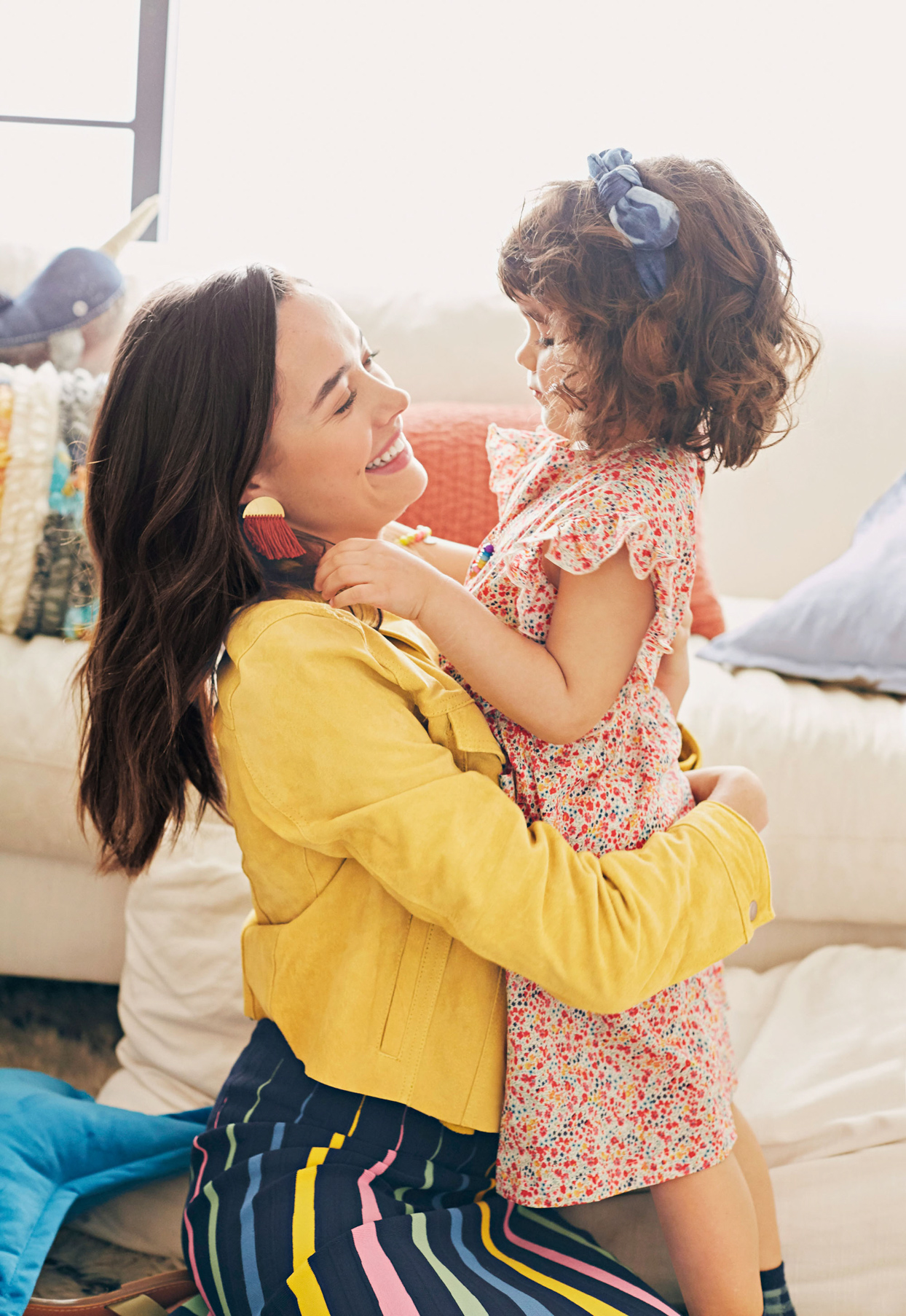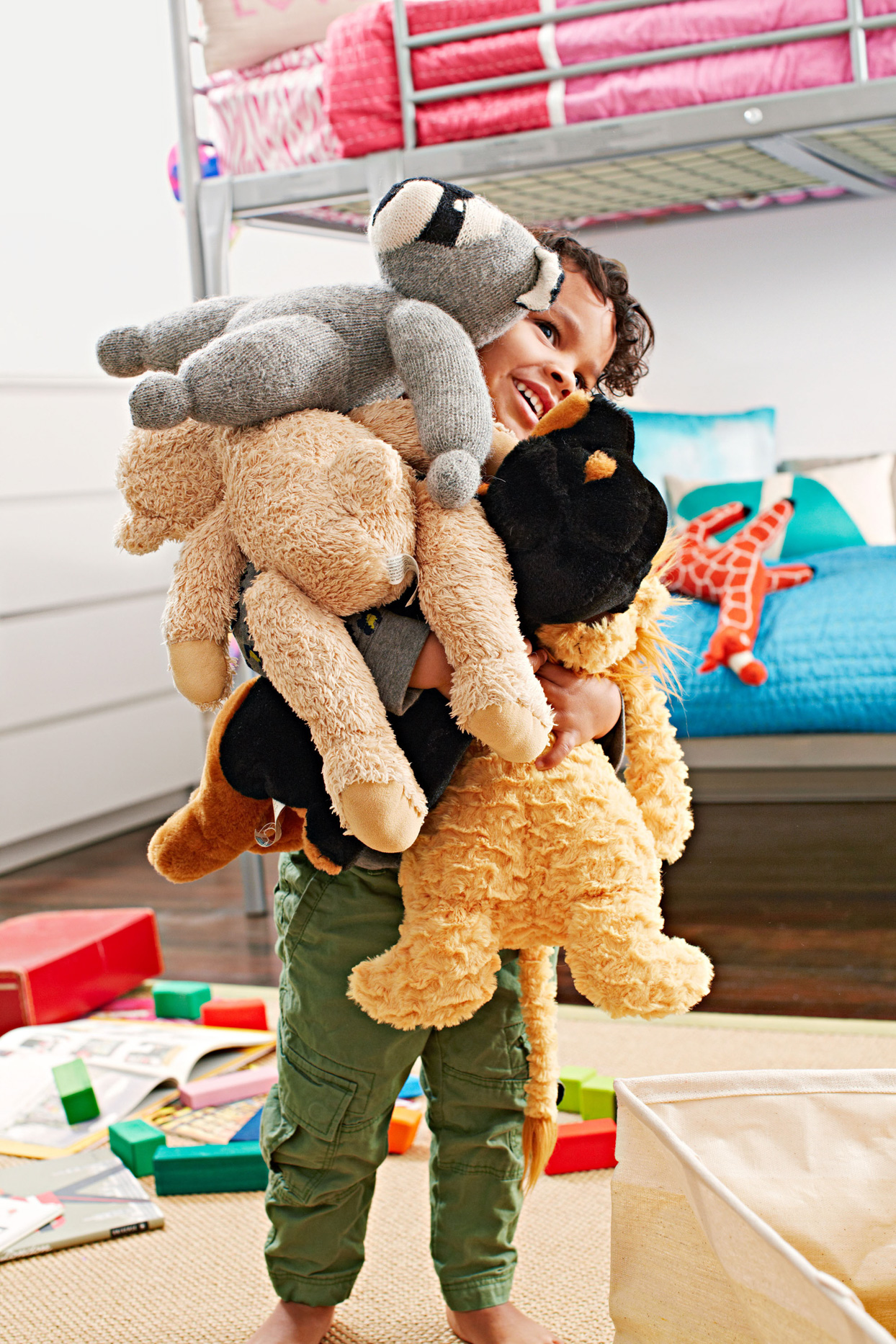
A woman I counseled named Claire came to me because she was going through a hard time with her son, Daniel. Within minutes of entering a room, the 7-year-old would break or spill something. Claire trailed after him, warning him to slow down. When disaster struck, she yelled at him and sent him for a time-out, which he sometimes agreed to take. "It seems like he's running rampant just to piss me off," she said. She registered only the disobedience. "My son loves to give me a hard time. My worst fear is that he's always going to be like this."
Although Claire didn't realize it, her parenting style was drawn from two instincts that aren't productive for raising independent, confident children in the world we live in now. The first was negative tracking, or only noticing what's "wrong." If you're always on kids about what they shouldn't do, you're not teaching them what they should do. Case in point: Claire's laser focus on Daniel's problematic behaviors.
The second outdated instinct was confirmation bias, the tendency to use—or twist—information to confirm opinions you already hold. This creates self-fulfilling prophecies for "bad" kids and causes anxiety in "good" ones who struggle to live up to their parents' hype. Parents with a confirmation bias pigeonhole their kids into types: "the star" or "the troublemaker." Parents cling to these types despite contradictory evidence. Daniel is only 7, and Claire has already decided that he's going to frustrate her for the rest of her life.
But it is possible to flip the script and subdue these instincts.
Acknowledge the positives
I often show parents a picture of about 20 kids at a playground and ask them to call out what they notice first. Invariably, they notice the kid picking their nose, the one who is crying, the one winding up to punch another. What they don't notice are the kids sharing, the one playing quietly, or the one inviting another to join the game.
So, parents often ask, should they only notice the positive and pretend the negative behaviors aren't happening? No. Making a new blueprint for how you parent requires that you notice all behaviors. "If you can get to a higher ratio of paying attention to your child's positive behaviors, you're going to see more of what you want," says David Anderson, Ph.D., a clinical psychologist at the Child Mind Institute, in New York City.
Claire could try thinking of the opposite of Daniel spilling things, which would be all the times he drinks a glass of juice without incident. Once you have those opposites in mind, try to notice them—and praise your child whenever they demonstrate them. Downgrade the irritation about a kid getting out of bed five times a night, and instead, up your appreciation for when they stay put.
Shoot for a three-to-one ratio of appreciation to criticism. That's hard to do when you're used to noticing the negative, but the long-term reward is worth it. "Appreciate your child when they succeed, decrease the yelling and attention to negative behaviors, and you'll see real behavioral change over time," says Dr. Anderson.
Practice, practice, practice
There's a method for overcoming less-than-useful instincts, known as "overlearning." So, during the first few months, shoot for an even higher ratio than three to one to overlearn the practice of appreciating the positive more than you criticize the negative. It takes discipline, but if you can do it for a while, you'll notice a change in your child's behavior. If the change is sustained over a few months, you're hitting the sweet spot.
Really oversell the appreciation, no matter how disingenuous it feels. If your kid stops eating with their hands, isn't that worth a little awkwardness? One mom said she got over her embarrassment by putting the word dude in front of her praise. "It made it okay for me, somehow. I'd say, 'Dude, thanks for keeping your snacks in the bowl. Dude, thanks for being polite to your sister,'" she said. "In any other context, saying 'dude' would be embarrassing. But in this, it helped." Whatever works, dude.
Track everything
For two weeks, pretend your kid is an experiment and you're a scientist. Choose a problematic behavior to study, and start collecting data. Since bedtime is a popular complaint, let's go with that. Every night, count how many times, and for what reasons, your kid gets out of bed. Record how you react. Also keep track of the times they didn't get out of bed.
Parents tend to fixate on the two nights a week their child broke bedtime rules, especially if it triggered a screaming match. They forget all about the three nights the child went right to sleep, or the two nights they complained a little but settled quickly. If the data shows that your child's behavior is fine most of the time, then perhaps you'll learn to relax at bedtime, instead of the usual high alert that puts everyone on edge. With data, you can look at the numbers and see that the two nights your kid gave you a hard time, you yelled once and controlled your emotions once. Next week, you can strive to bring your "lost it" number down.
When you track yourself and your child and use the data to learn what works and what doesn't, the bad nights become fewer and farther between and shorter in duration. Data allows you to pay attention to what goes right and wrong, and lets you use that information for everyone's benefit.

Give up on being \”right\”
Whenever I hear a parent like Claire say, "Daniel is a troublemaker," a red flag waves in my mind. She has a fixed idea of her child, and that's hard to shake.
If you think, "My kid is bad at math," you might become anxious about the subject. Even if your child succeeds, you might not be able to let go of your anxiety. When a boy I'll call Viktor was in middle school, he was not conscientious about his studies and was vocal about his disdain for school and his teachers. His parents had a terrible time just getting him out the door in the morning, literally dragging him to catch the bus, which he "missed" constantly. Yet somehow, Viktor got through middle school. And then, in high school, something clicked. Inspired by his new teachers, he cared about his classes. But for the duration of his freshman year in high school, Viktor's parents continued to yell at him every morning about not being late. They didn't seem to realize he hadn't missed the bus once. The nightly homework nag session continued, even though he'd become an intrinsically motivated self-starter. By sophomore year, they acknowledged that he was doing well, but they lived in fear of him backsliding, reverting to the kid they "knew" him to be.
Viktor managed to make a sustained change on his own, but the best way for this to happen is for parents to believe in their kid—to reinforce the good stuff and not insist that any success is a fluke. As we have all experienced, success is not an unwavering straight line upward. There will be zigs, zags, downturns, backslides. But kids (and adults) can recover more quickly if they feel that the people around them believe in them and support them.
Avoid creating a self-fulfilling prophecy
Your biases influence how you treat your child, for good or ill. This phenomenon, called the Pygmalion Effect, was proved back in 1964 by a Harvard professor named Robert Rosenthal, Ph.D., who did a fascinating experiment on elementary school students and teachers in San Francisco. He created a fake IQ test, put the Harvard stamp on it, informed the teachers that this new test could predict academic success, and administered it to 18 classrooms of kids. At random, he chose 20 percent of the students and told the teachers that he predicted their IQs were going to "bloom." Over the next two years, Dr. Rosenthal tracked the students' real IQ scores. Compared with the untapped 80 percent, the "bloomers'" scores soared. Dr. Rosenthal determined that the teachers had given the chosen students more time, attention, and encouragement, which translated into IQ gains. Expectation became reality.
For further proof, all you need to do is look at your own past. What beliefs did your parents or teachers have about you that you carried through childhood, adolescence, even into adulthood? How would your life have been different if you weren't burdened by their expectations?
Claire, mother of "troublemaker" Daniel, expressed her negative opinions about her son to family and friends daily, as if enlisting them to confirm her bias. After I explained how negative tracking and confirmation bias were damaging Daniel's positive behavioral change, Claire was appalled. Her hypervigilance and criticism were creating a self-fulfilling prophecy. Daniel, in his need for attention, lived up to her expectations. Along with introducing the concept of appreciating opposite behavior and tracking target skills, I suggested that Claire have Daniel assessed for ADHD. "His behavior might not be his fault," I said. It had never occurred to her that Daniel wasn't running rampant because it was "just who he was." (Not too surprisingly, tests determined that Daniel had severe ADHD.)
Discover your child
The wonder of parenting is looking at this person you've created and asking, "Who are they?" Not long ago, one of my sons had a baby. My wife and I have no idea who our grandson is. Right now, he's only 15 pounds. He'll reveal himself to us gradually while he, and we, solve the mystery of who he is. Meanwhile, we'll be supporting and helping, guiding and marveling, noticing (and praising) all he does right, letting him become who he truly is: himself, rather than our ideas of him.
If I change my parenting, when will my child change?
If you curbed your negative bias today, it would take about three months to see a shift in your child's behavior. But you will see some encouraging signs along the way:
By week 2: you'll feel less resistance about shifting your negative bias.
By week 4: through overlearning, you'll have upped your appreciation-to-correction ratio and will notice some change in your kid's behavior.
By week 6: your child will be consistently better at the target behavior.
By week 8: you'll be used to the way your child is complying more often than not.
By week 12: the new behavior—yours and your child's—will be established and solidified.
For children with severe difficulties, it might take up to four or five months to break bad habits. For typical kids, it could be as little as eight weeks. But if you stick with the strategy for long enough to notice change, it's probably going to last. According to research (and my experience), these interventions cause shifts that continue for six months, a year, even three years down the road. It might feel like a long haul to the three-month mark. But once you establish change, good behavior will become the new normal.
Reprinted from The Scaffold Effect: Raising Resilient, Self-Reliant, and Secure Kids in an Age of Anxiety, by Harold S. Koplewicz, M.D., published by Harmony Books, an imprint of Random House, a division of Penguin Random House LLC. Copyright © 2020 by Child Mind Institute, Inc.
This article originally appeared in Parents magazine's March 2021 issue as "Look for the Good." Want more from the magazine? Sign up for a monthly print subscription here
Parents magazine













